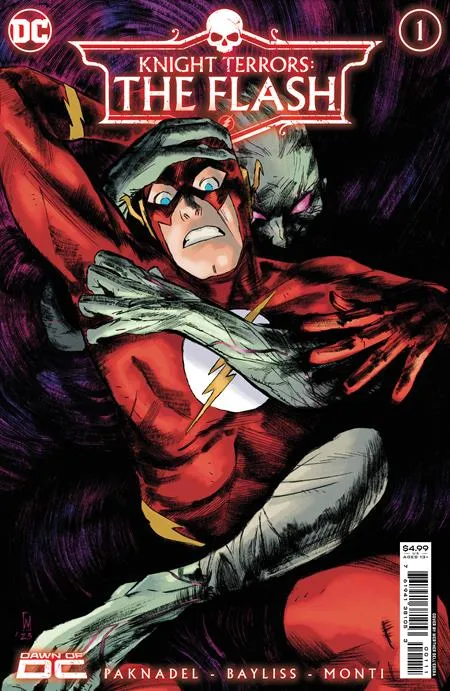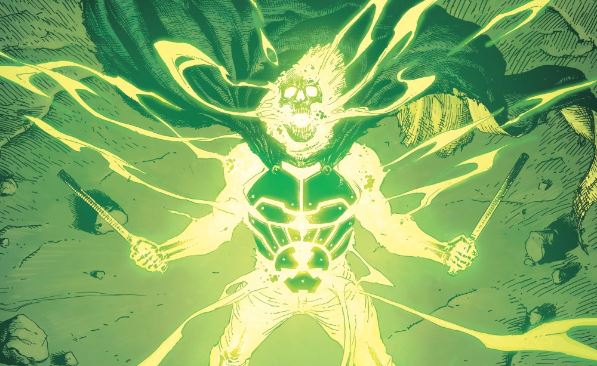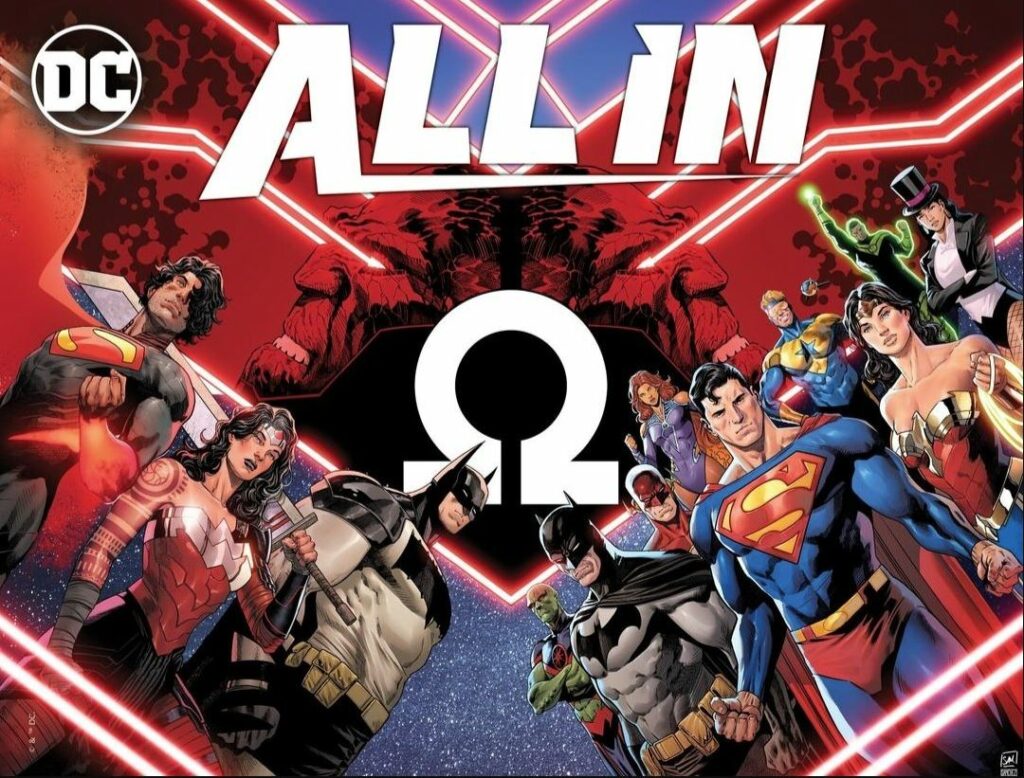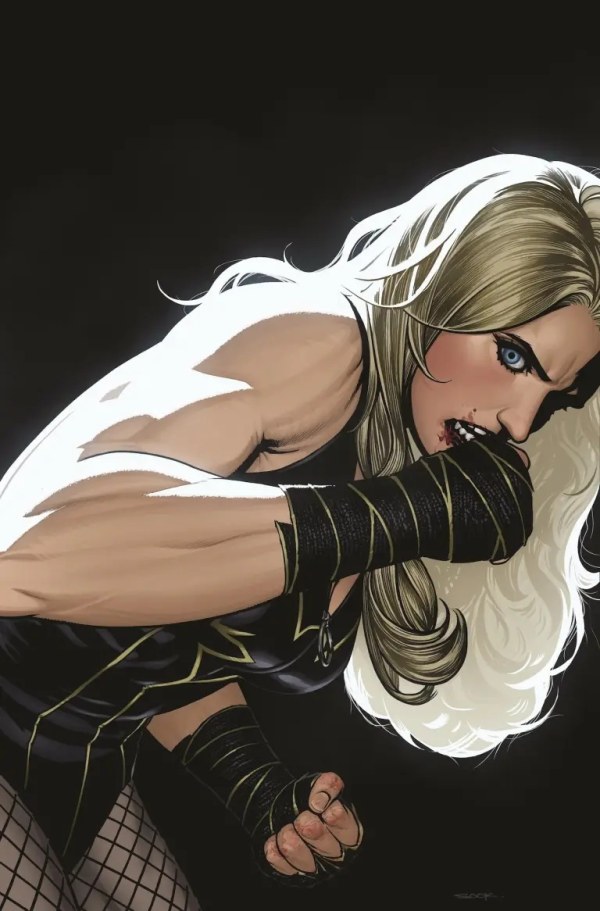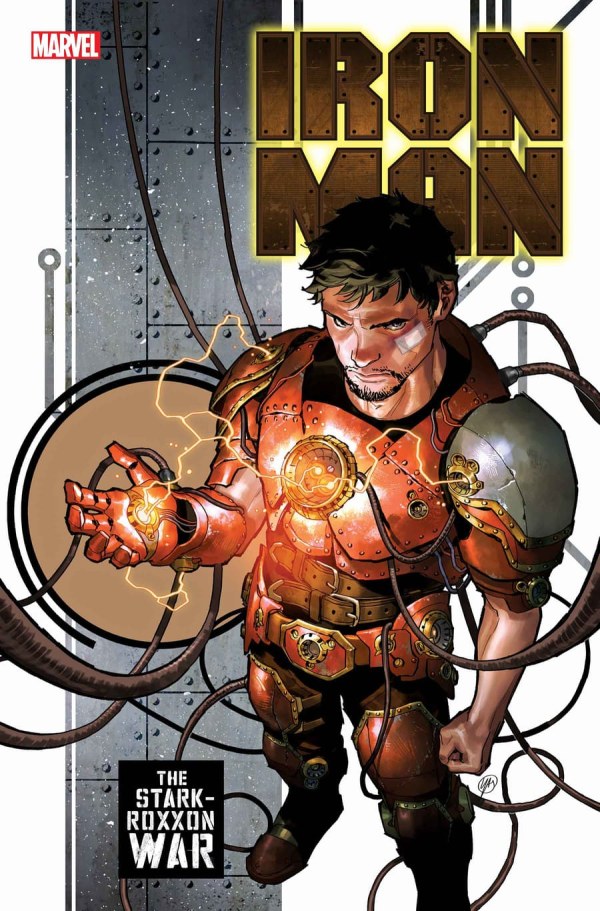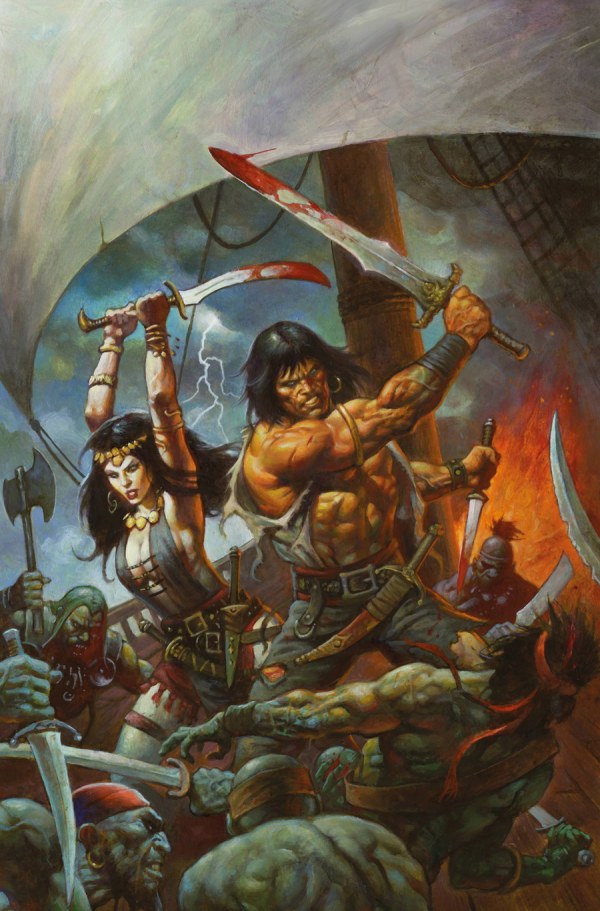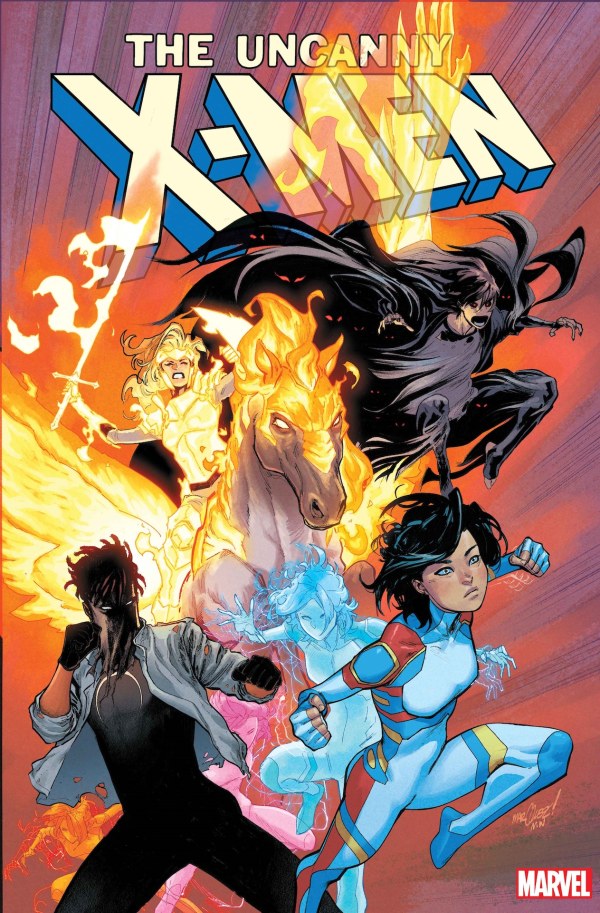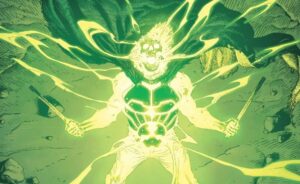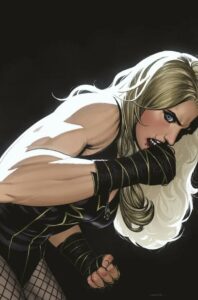Imagine you were the fastest man alive. You could move so fast that light slows around you, and time changes at your mere suggestion. You could step outside the laws of physics, and bend them in new and exciting ways. You could be anywhere, go everywhere. You could save everyone.
You have to save everyone.
Anything else is a betrayal: of yourself, of your morals, of the dream you’ve found yourself in. That dream that you dare never wake up from. That dream of being a hero. It is a dream, right?
In Knight Terrors: The Flash #1, Barry Allen wrestles with that very question.
Courtesy of the psychological horror across spacetime that Alex Paknadel, Daniel Bayliss and Igor Monti have whipped up here, DC is delivering on the substantive, speculative potential of an event like Knight Terrors.
The Makings of a Nightmare
As with all Knight Terrors tie-ins, Knight Terrors: The Flash #1 centres on the nightmares of our titular hero as brought to life by the villain Insomnia. In this case, Barry Allen finds himself seemingly unmoored in time, as his idol and mentor Jay Garrick repeats a fight he’s fought years before, and his previous sidekick Wally West is back in the yellow and red get-up. And like Batman, Ravager and the other stars of this event, he’s aware something’s not quite right. There’s this scratching feeling at the edge of Barry’s mind – this all feels too familiar, but at the same time unreal.
Before he can put his CSI skills to the test however, unpicking the mystery of this false reality, the unthinkable happens. Wally is wounded fighting Gorilla Grodd, and the prognosis isn’t good.
On the surface of it, Knight Terrors: The Flash #1 might sound like it hits a lot of familiar beats. Something’s amok with the world, the lives of Barry’s loved ones are on the line, and his only solution seems to be to break time just a little once again. What elevates it though, and what separates it as one of the best examples of this event, is how it uses those familiar elements as short-hand, shifting focus from the events of the plot and instead onto the psychological ramifications that events even as typical as this pose to a man like Barry Allen.
Moreover, the issue concerns itself with the very nature of heroism, the cost of it and the undercurrent of responsibility. It uses the Knight Terrors framework to explore the existential dread that arrives when heroism is taken to its superheroic extreme, and the dream of having such amazing powers becomes a nightmare.
Analysing a Scene in Knight Terrors: The Flash #1
From the very first page, Paknadel, Bayliss and Monti are in lock-step as they subtly outline core themes of this two-parter.

We open on a nine-panel grid, offering the reader a omniscient bird’s eye view of Barry Allen at work – not as a superhero, but as a crime scene forensic officer. Meanwhile, Barry recounts a conversation he had with his wife Iris early in their relationship, not long after she discovered the secret of his double life.
It’s a quintessentially Flash opening, but while it’s clear that Paknadel has a lot of love and appreciation for The Flash as a title – and DC history at large (if the intelligent deep-dives into continuity are anything to go by) – what shines through is his sustained interest on character. Iris’ characterisation makes that immediately clear:
‘Iris didn’t ask the usual questions. “Can you outrun Superman?” “Can you eat whatever you want?” Instead, she wanted to know how I see the world.’
Barry Allen, Knight Terrors: The Flash #1, p.1
Iris, and by extension the reader’s first exposure to this story, move beyond the shiny aesthetics of superheroics. Questions of what are rendered far less important than questions of how, of why. Paknadel situates the reader in the mind of an investigative reporter, seeing beyond the facts as presented and digging into the humanity behind them – the stories.
It immediately draws into scope the duality of (super)heroism. To Barry, it’s this ineffable phenomenon – an incalculable privilege that makes life feel like it’s not even real. Capturing its wonder in things as meagre as words seems almost impossible. And yet, to her, it’s not the ‘dream’ he describes it as.
‘Iris looked at me differently after that.’
It’s a simple line, that in any other context might read as if she’s awestruck by the romance of it all. But here, it’s colder, sadder. It carries a hint of existential dread found lingering in the gutters of the page. The realisation that everything is different for Barry, or more accurately that nothing is the same. There’s no such thing as taking a minute to breathe. There are people that need saving, and there’s saving that needs doing. And he can’t stop, because he’s the only one that can.
And the saving never ends.
The line ‘every clock is set to eternity’ instils that sense of forever-tension that turns their exchange on its head. However, that line wouldn’t carry nearly as much weight if it wasn’t for the particular construction of the page, and the space in which it’s situated.
Compositionally, it rests at the centre of the nine-panel grid mentioned earlier, a layout known for its connotations of rigidity and tightly-enforced structure. Made famous for its use in Watchmen (1986), it’s actually the final pages of King and Bagenda’s The Omega Men (2016) that spring to mind here. In it, King metatextually remarks on the panels and gutters of the nine-panel grid:
‘It’s a cage, right? They’re just bars on a cage. The story, the adventure, is locked behind them – separated from us. As if it’s something savage. As if we’re something civilised.’
Kyle Rayner, The Omega Men: The End is Here
Now, it’s important to note here that the savagery he refers to is more so in the context of a civility/savagery paradigm that sits at the heart of that book’s examination of Imperialism, but that doesn’t necessarily render it completely out of place in an analysis here. The use of the nine-panel grid, specifically on the opening page of Knight Terrors: The Flash #1, does speak to a kind of narrative imprisonment. Barry cannot escape the nightmare of heroism he finds himself in, trapped in a cycle as endless and constant as the very turning of the page or the monthly publishing of his adventures. It is both wonderful and terrifying, a magnificent honour and an existential snare.
Additionally, the fifth panel where Barry describes how his speed alters his perception also serves to alter how the reader perceives this issue. As presented, the centre panel acts as a kind of censor, omitting the violent murder that we are to infer resides beneath Barry’s narration. And, like the duality of heroism that permeates Knight Terrors: The Flash #1, this panel also serves dual purposes.
On one hand, it reinforces the primary-coloured sense of wonder and optimism that exists in superhero comics, and The Flash in particular. It negates what would otherwise be a horrific image, replacing it with fantastic and imaginative prose that distracts the reader from the necessary cruelty of Barry’s life. It’s easy to see this as Paknadel and Bayliss suggesting that the central focus of a page of the Flash (literally and figuratively) shouldn’t be on death and trauma.
On the other hand, this sleight of hand replaces one horror for another, sublimating a horrible but also commonplace piece of imagery, something contained within the specificity of its visual representation, with something formless and uncontained. As any fan of horror movies will tell you, a film isn’t at its scariest when you can see the monster – it’s when you have no idea where it is. Similarly, the real horror of superheroism isn’t measured in the bodies you can see, but in the passing of seconds that never end.
Remember: ‘every clock is set to eternity’. While that might seem a dream on the surface, it soon becomes a nightmare when you can’t wake up.
‘A Monster in the Lightning’
Knight Terrors: The Flash #1 is a brilliantly crafted exploration of the existential horror bound up in being a superhero, expertly used to find new avenues to explore a longstanding character like Barry Allen.
There are so many examples of the artistic tour-de-force that the creative team are pulling off throughout the rest of the issue worth talking about. The clever and easy to overlook re-association of the colour red with anger, something that is typically avoided in Flash stories given their joyful tone. The truly magnificent blend of vibrant, ultra-chromatic colours and evocative character expressions, mixed with the wincingly good depiction of Barry rending his atoms through the Speed Force in order to attempt Flashpoint 2.0. Even the design of Hal Jordan who, in his brief appearance, serves as a stark omen of the consequences of taking on too much of the hero’s burden. All of it absolutely sings on the page, as Paknadel, Bayliss and Monti leave nothing on the table.
My strongest recommendation, especially if you were planning on sitting Knight Terrors out, is to spend the time looking for entries like this. The confident yet understated level of craft, the mastery of interweaving continuity, and the attention to character all elevate Knight Terrors: The Flash #1 to be an event tie-in that defies expectations, playing with time just enough to make it worth yours.


